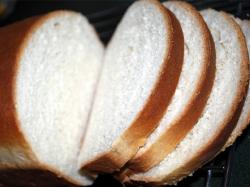In Our Foodie Culture, White Bread Is Toast
August 16, 2010 | 1 min to read

In July, one of the longest losing streaks in the history of culinary combat finally came to end. According to the Nielsen Company, 52-week dollar sales of packaged wheat bread topped those of white bread for the first time in U.S. supermarkets. Call it a victory for health — but nutritional aspects alone don't account for this reversal of fortune.
For years — no, make that millennia — the public has chosen white bread over its darker, grainier counterpart. In 77 A.D., Pliny noted in his Naturalis Historia that his fellow Romans preferred to mix the "swarthy" wheat of Cyprus with the "white wheat of Alexandria" to produce a lighter loaf. As humanity marched forth into the supermarket era, its tastes remained unchanged, and white bread commanded far more shelf space than wheat. To overcome such entrenched consumer preferences required more than just a superior supply of fiber and antioxidants. It required superior marketing, too.
Indeed, it's not as if we've only recently learned that bread made from refined white flour — which includes the starchy endosperm of the wheat berry but not the nutrient-packed bran and germ — is not as healthy as bread made with whole-wheat flour. In the 1830s, the furiously chaste Presbyterian minister and baker Sylvester Graham railed against the evils of refined white flour.
To read the rest of this story please go to: The Washington Post
